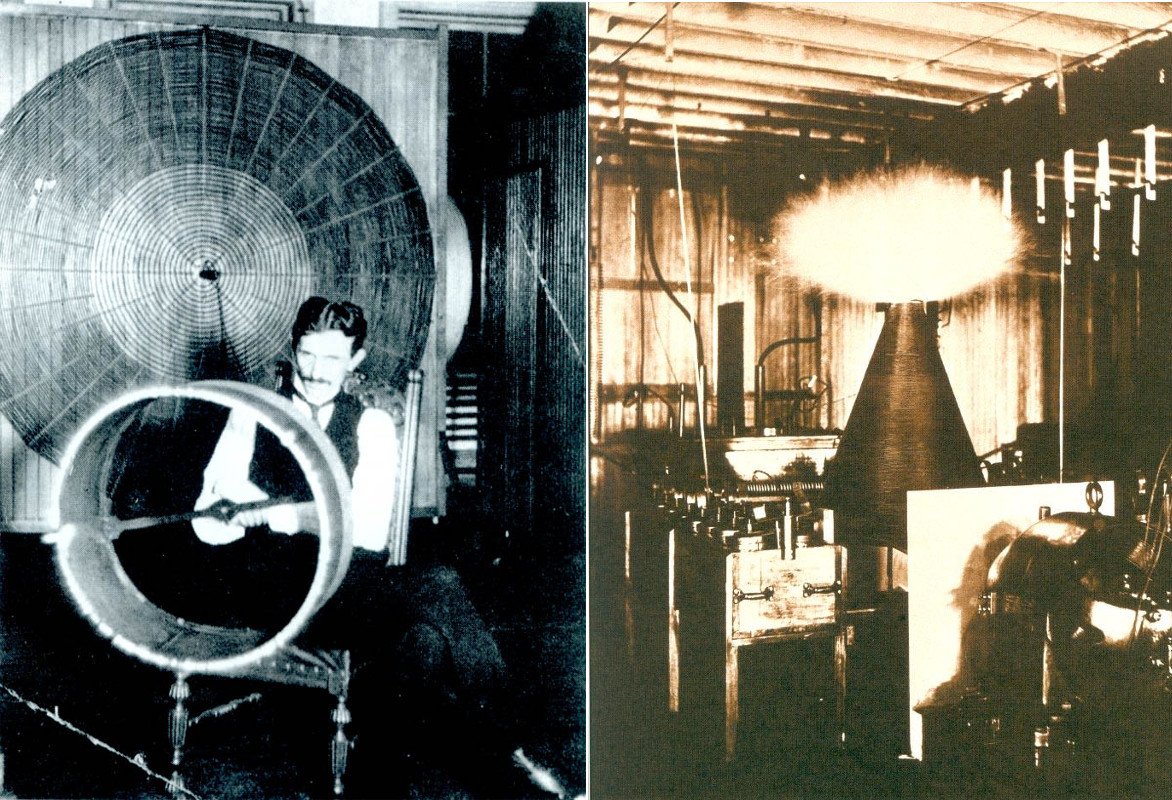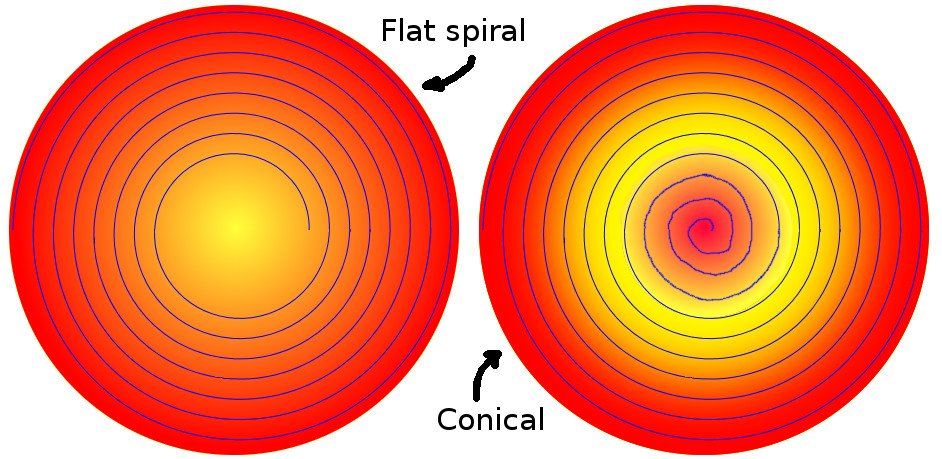Tesla first used cylindrical coils, but later made flat spirals and a conical coil. He mentions a reason to do this but could he have another reason? One that he did not mention?

When you want to create a high voltage in a coil, it makes sense to keep the wire ends between which this high voltage develops as far apart as possible. Thus we arrive at the single-layer air-core coil that we immediately envision when thinking of Tesla coils.
The first couple of hundred kilovolts can be achieved rather easily, but then it gets more and more power consuming. So Tesla must have looked for ways to increase the efficiency of these coils.
Coupling
Tesla mentions the problem of coupling the primary and secondary coils. You want a tight coupling to quickly transfer the energy of the primary to the secondary, but you want a loose coupling so to have the secondary freely resonating.
If you decrease the circumference of the secondary windings, you decrease the enclosed area, and thus you reduce the coupling. This was his first idea to solve this issue. If you make a flat spiral the outer windings have a tight coupling while the inner windings have a loose coupling, giving you the best of both worlds.
This is the only reason he gives us, I think because reasoning along this line will lead to his final solution of dividing the secondary coil in a tightly coupled secondary and a free ‘extra’ coil.
Yet, understanding his view on electricity there are two more factors to consider.
Compression
When you view electricity as caused by a gaseous medium, increasing the voltage means increasing the pressure. You do this -obviously- by compressing this medium. Now, if you look at a flat spiral and imagine a gaseous content to make one turn. The outer turns are larger and so contain more ‘gas’, which gets compressed into the inner smaller windings. Thus a flat spiral is more efficient in compressing electricity than a cylindrical coil. Similar ideas are later expressed in his bladeless turbine.

Charge distribution and resonance
A flat spiral, however, has one major problem. When viewed as a charged conductor it is easy to see that the charges will have a strong preference to remain on the outside, larger windings. This strong preference works against our wish to create resonance in the coil. So we must do something to break this preference and create a second preferred location for charges to accumulate in the centre of the flat spiral. This can be achieved by pulling the centre windings up, creating a conical coil where the top is at least as far from bottom winding as the diameter of this bottom winding.
Now when you apply a DC charge to the coil, charges will collect on the bottom winding but also on the top winding. And with this charge distribution it is much easier to create resonance.
This is what Tesla called his first major breakthrough in the development of his magnifying transmitter, because this was the first step towards efficiently creating the multi million volts that are needed in this device.
